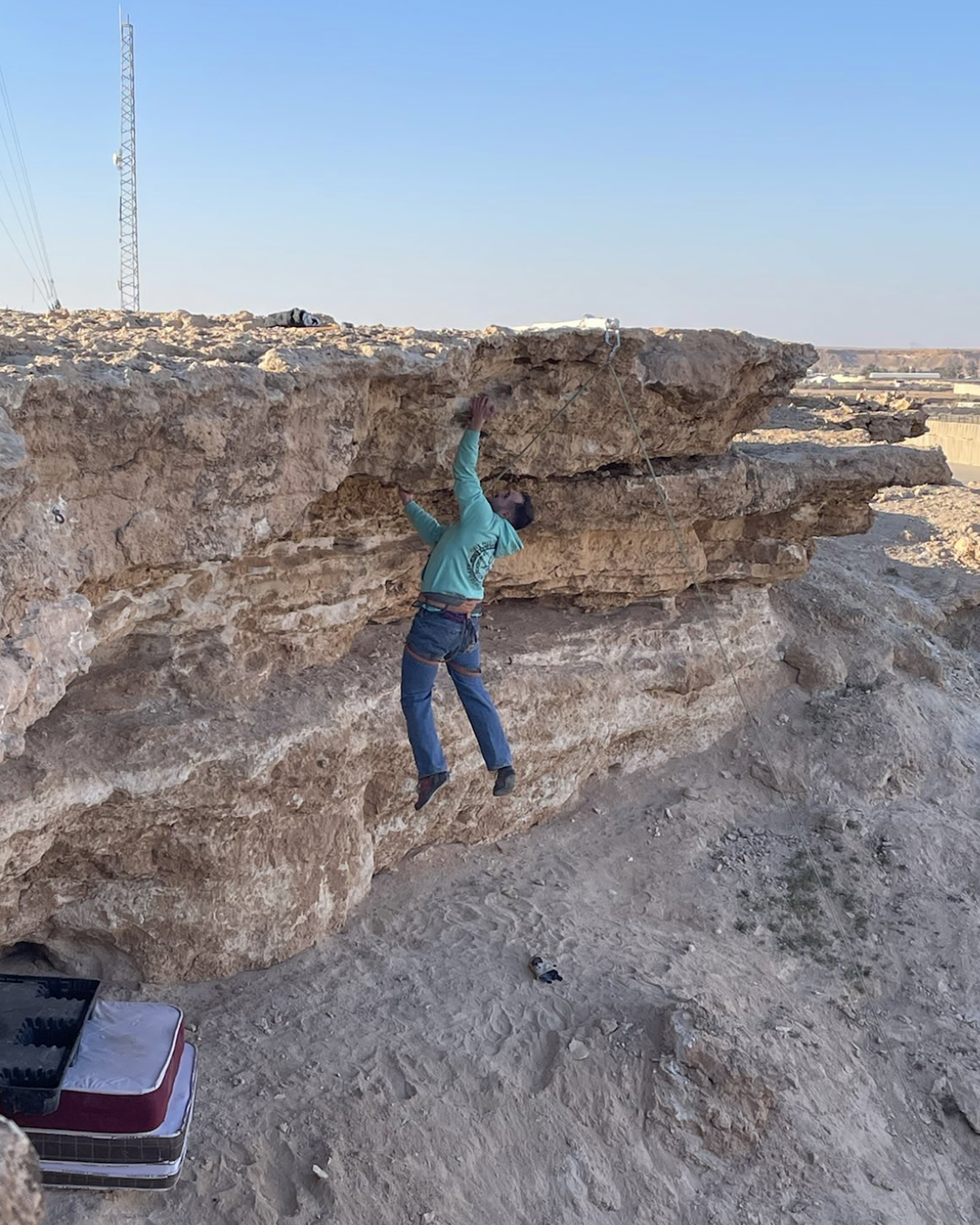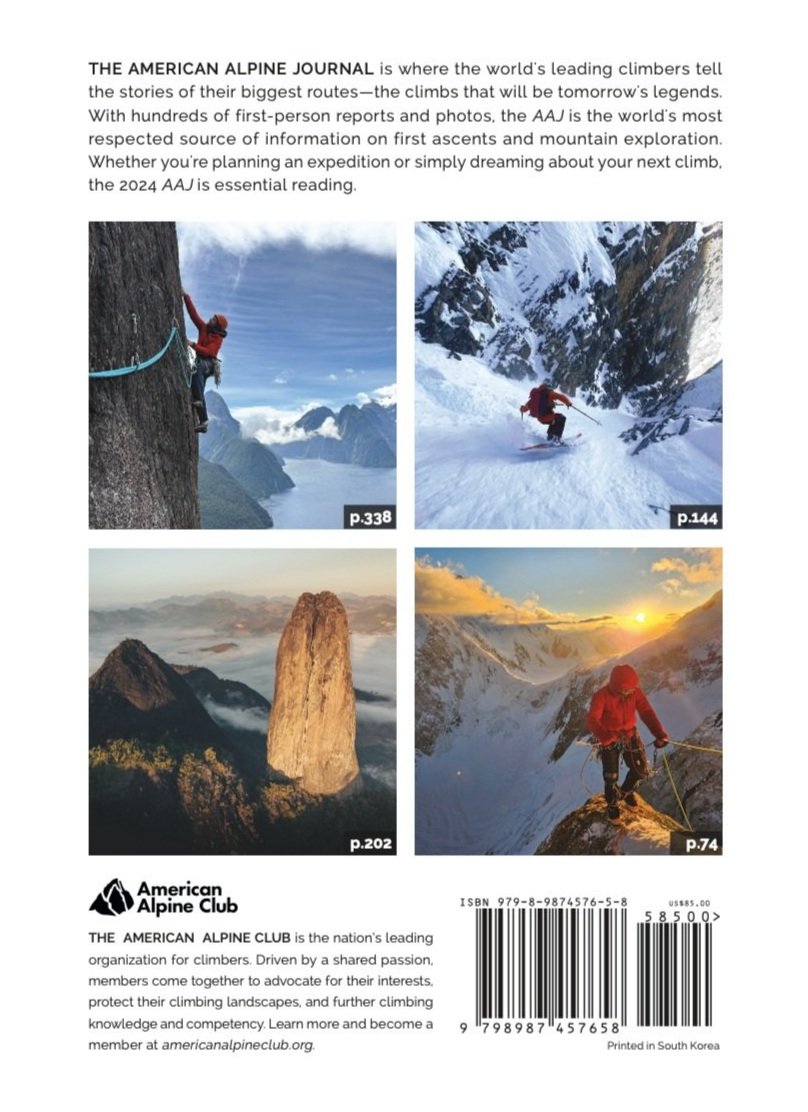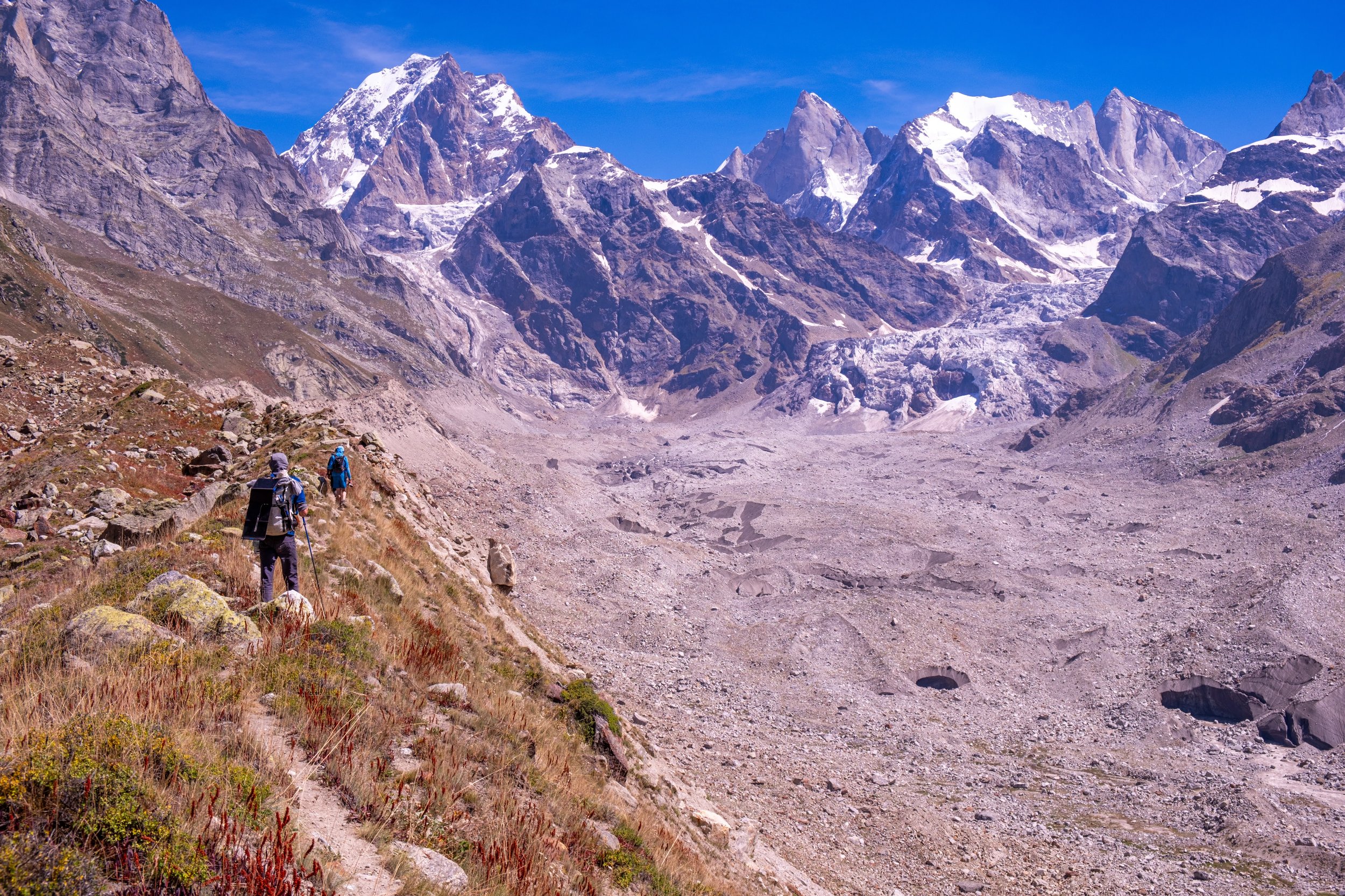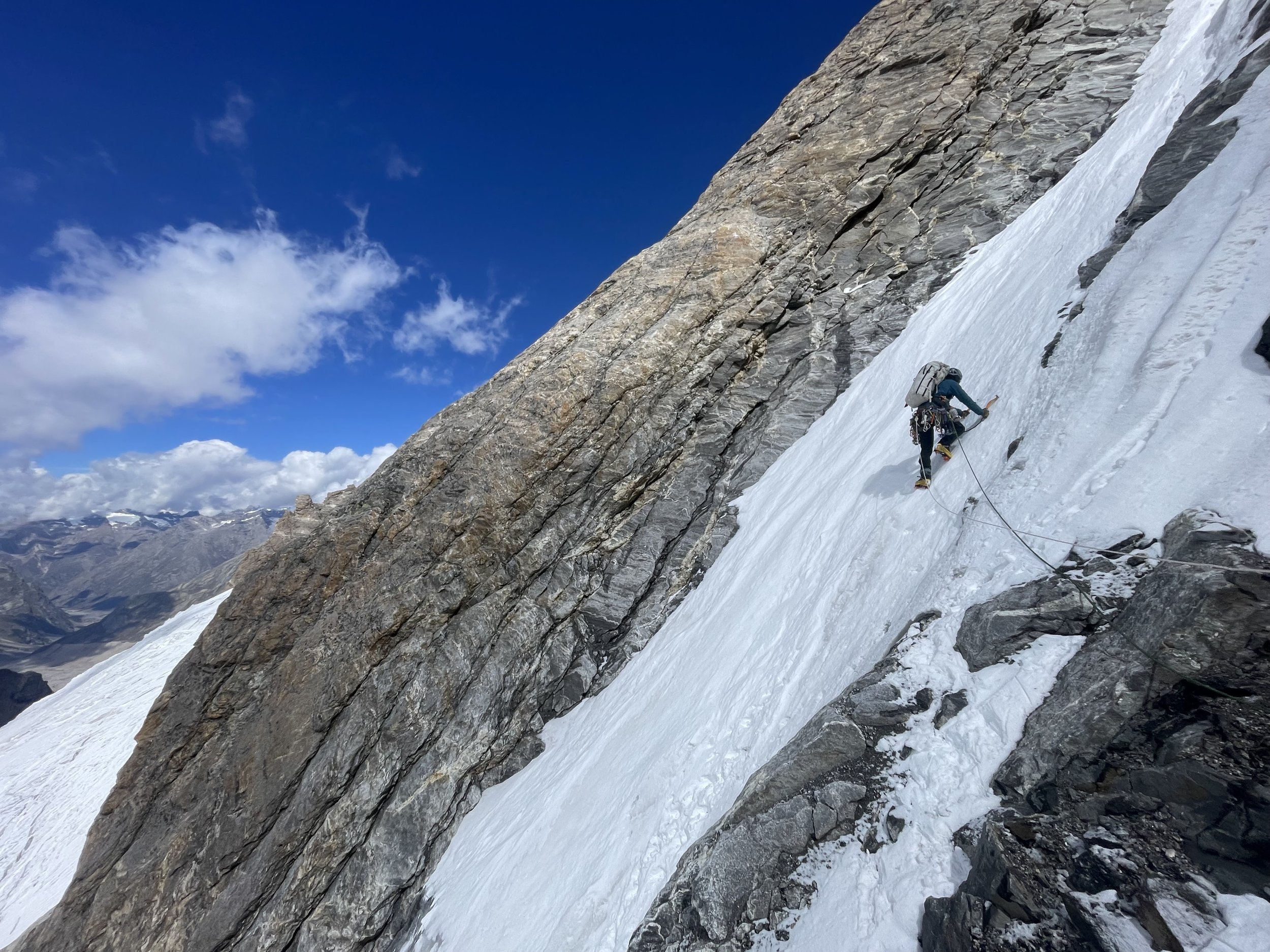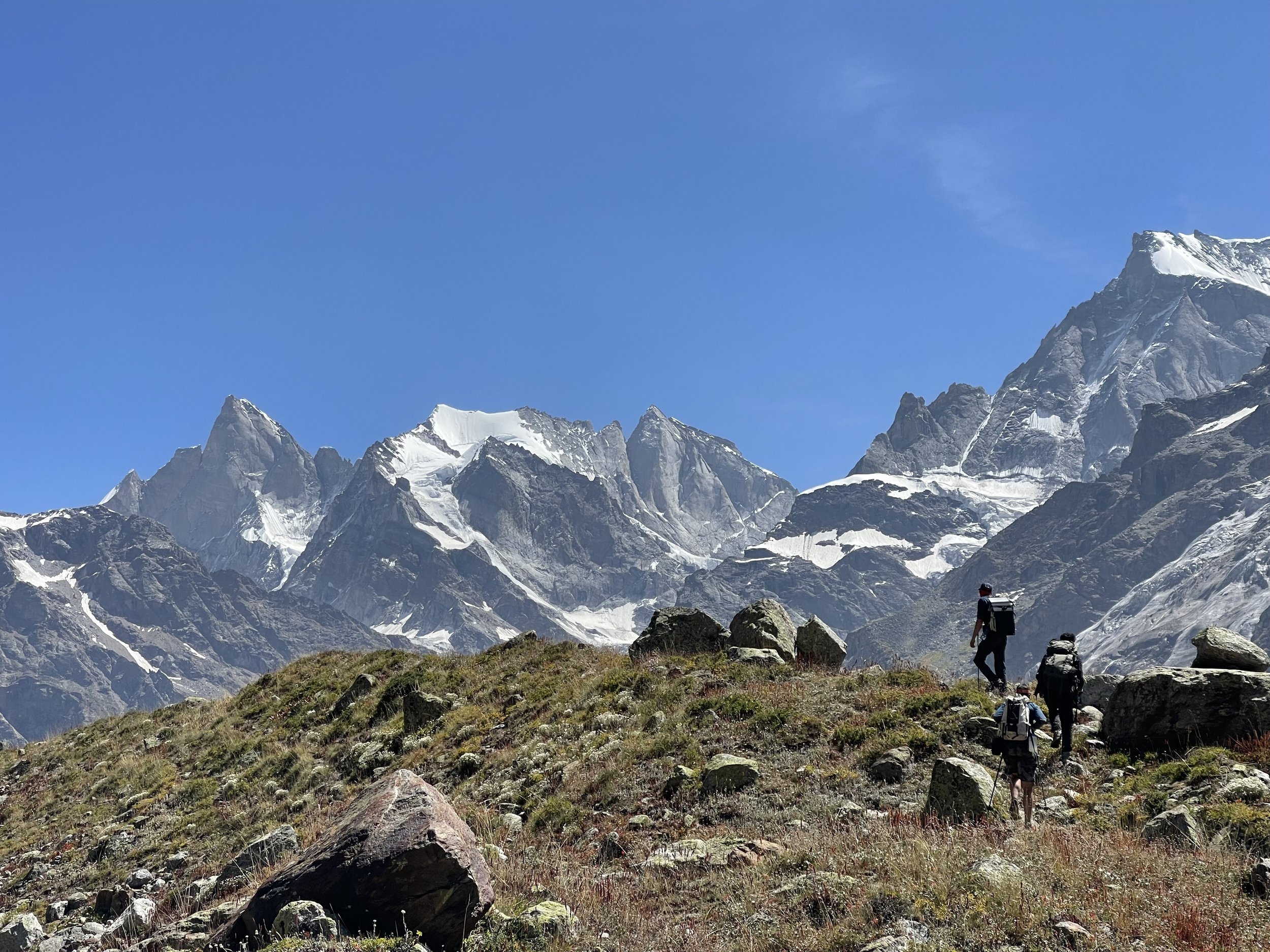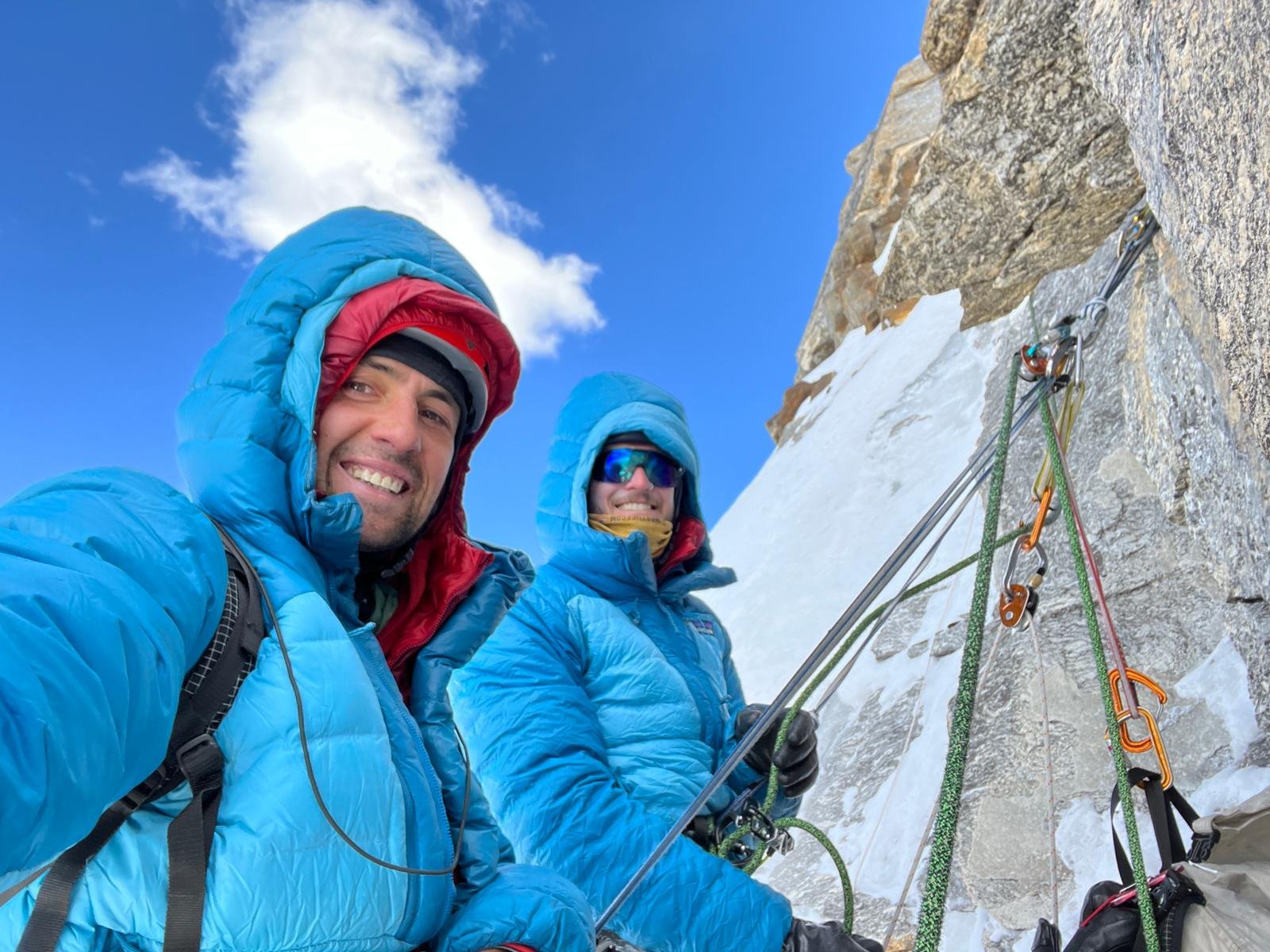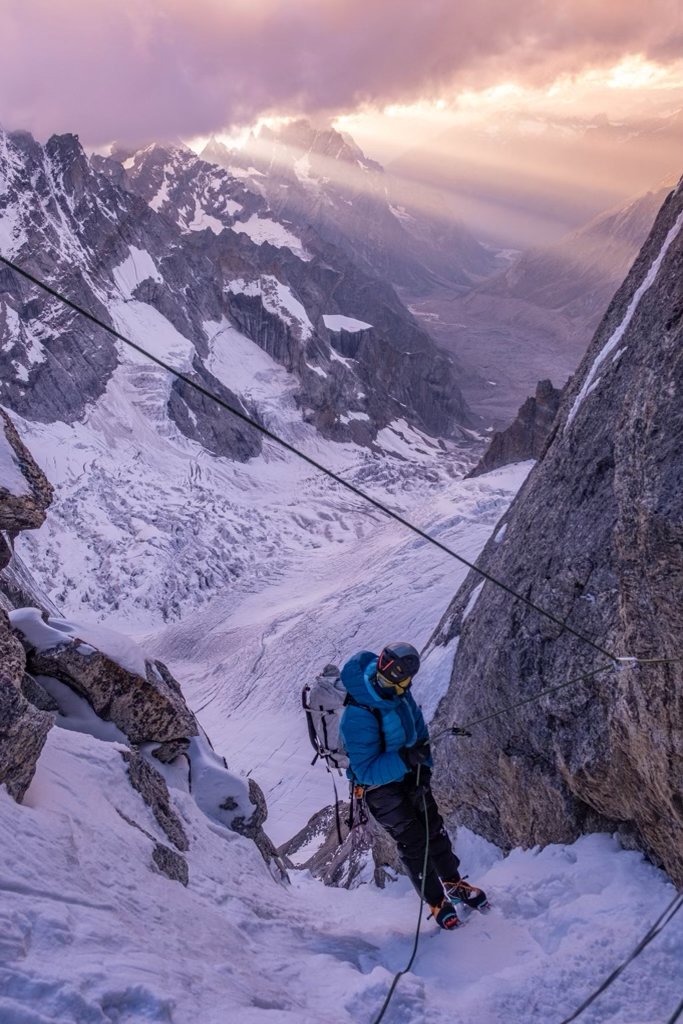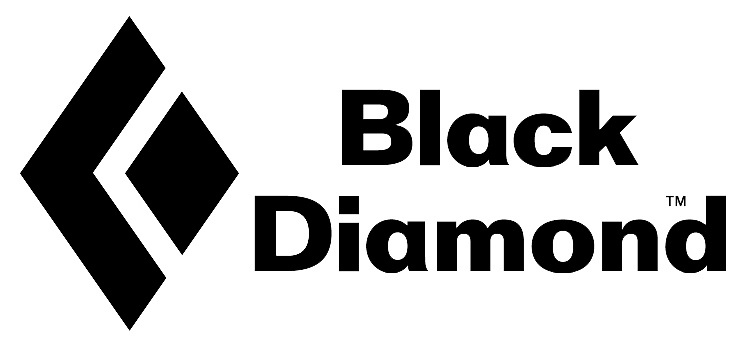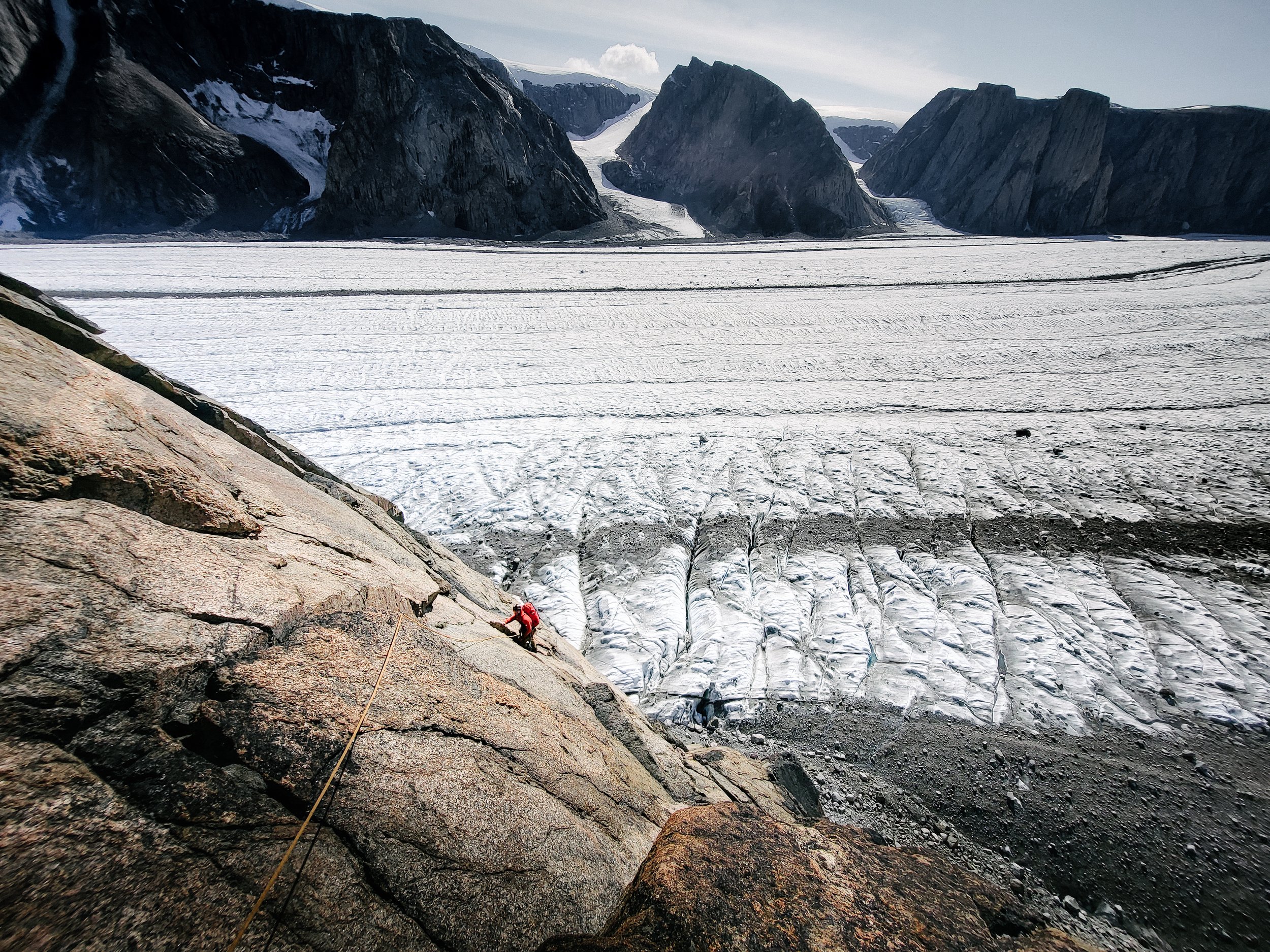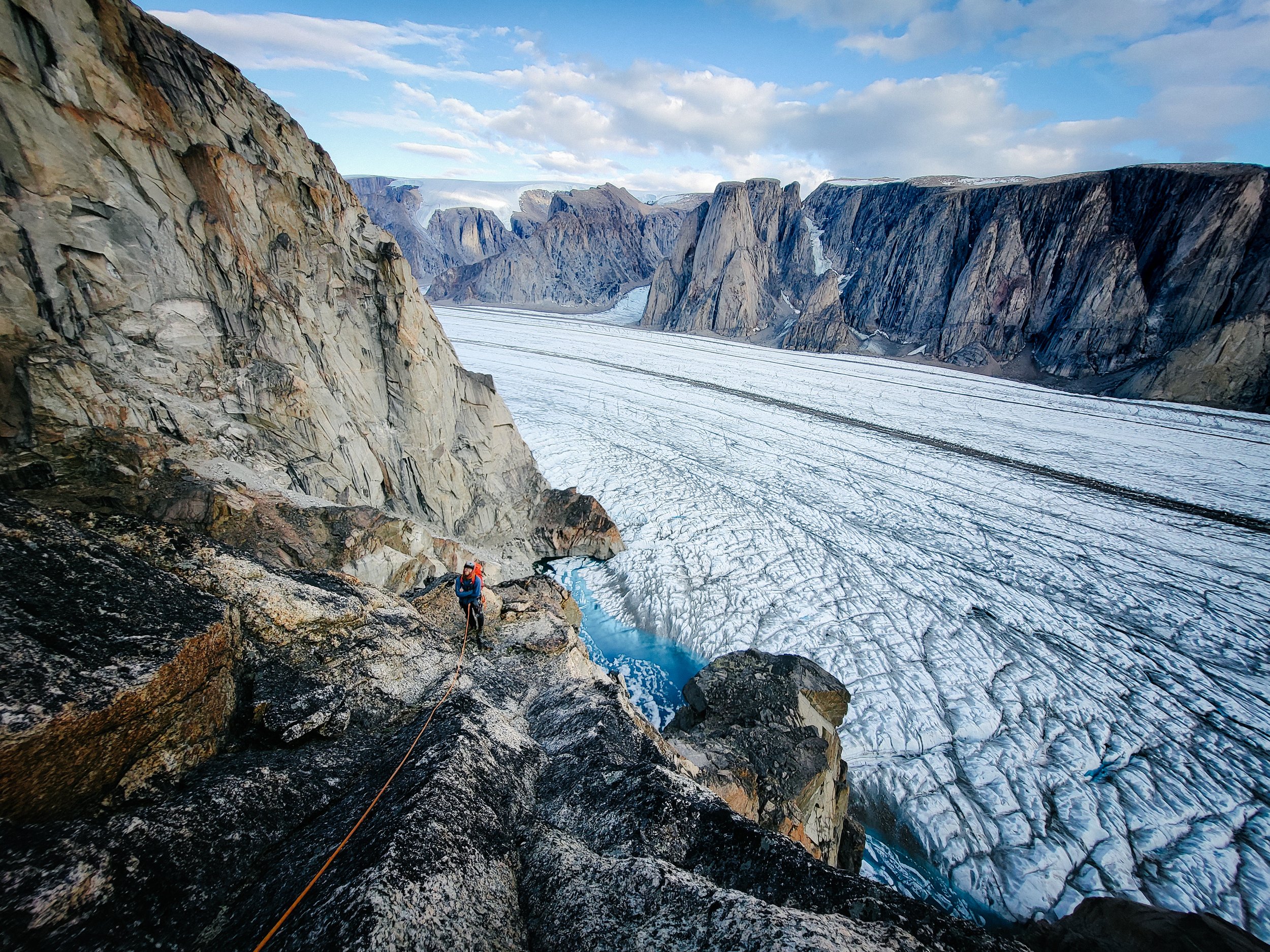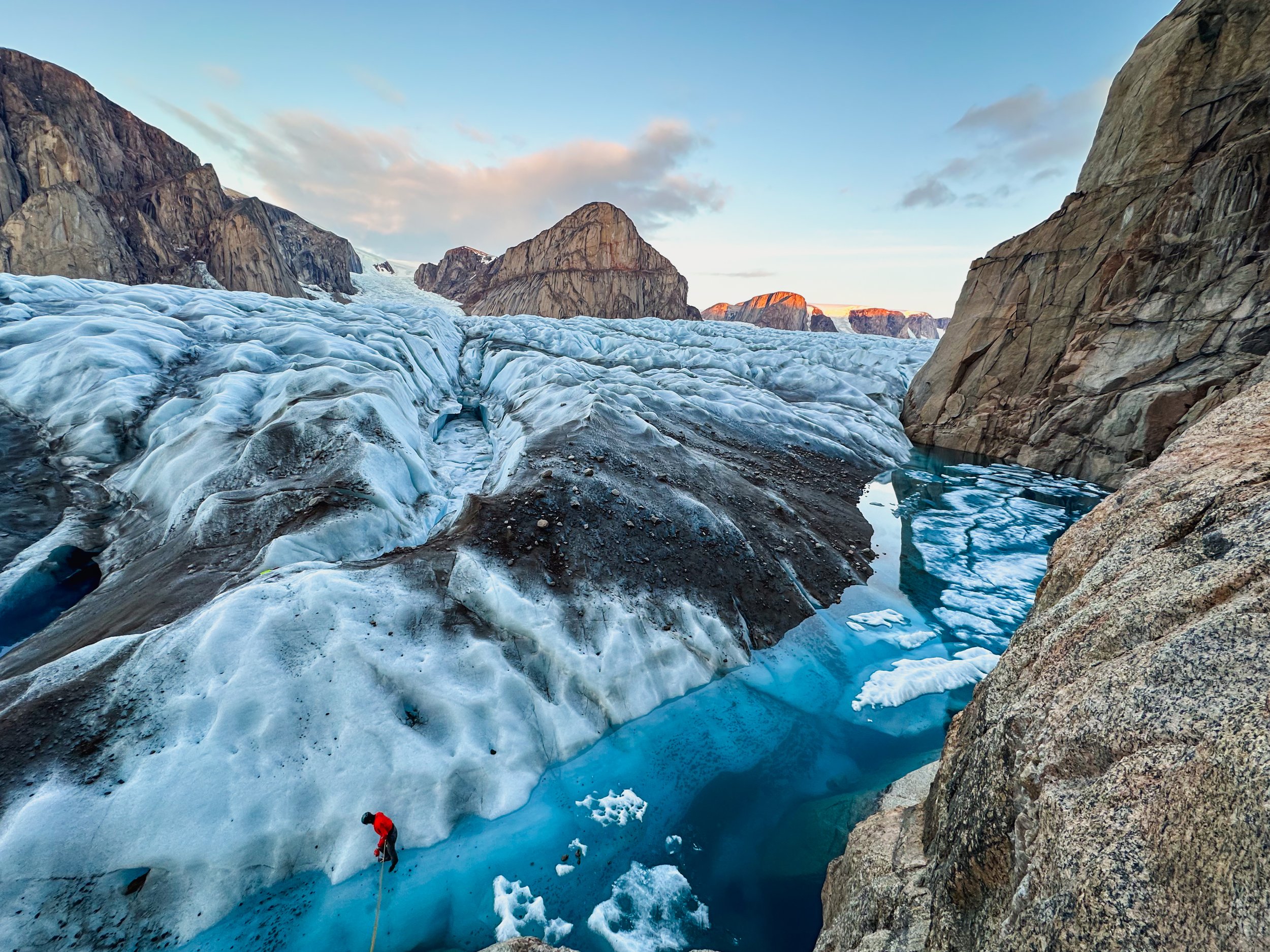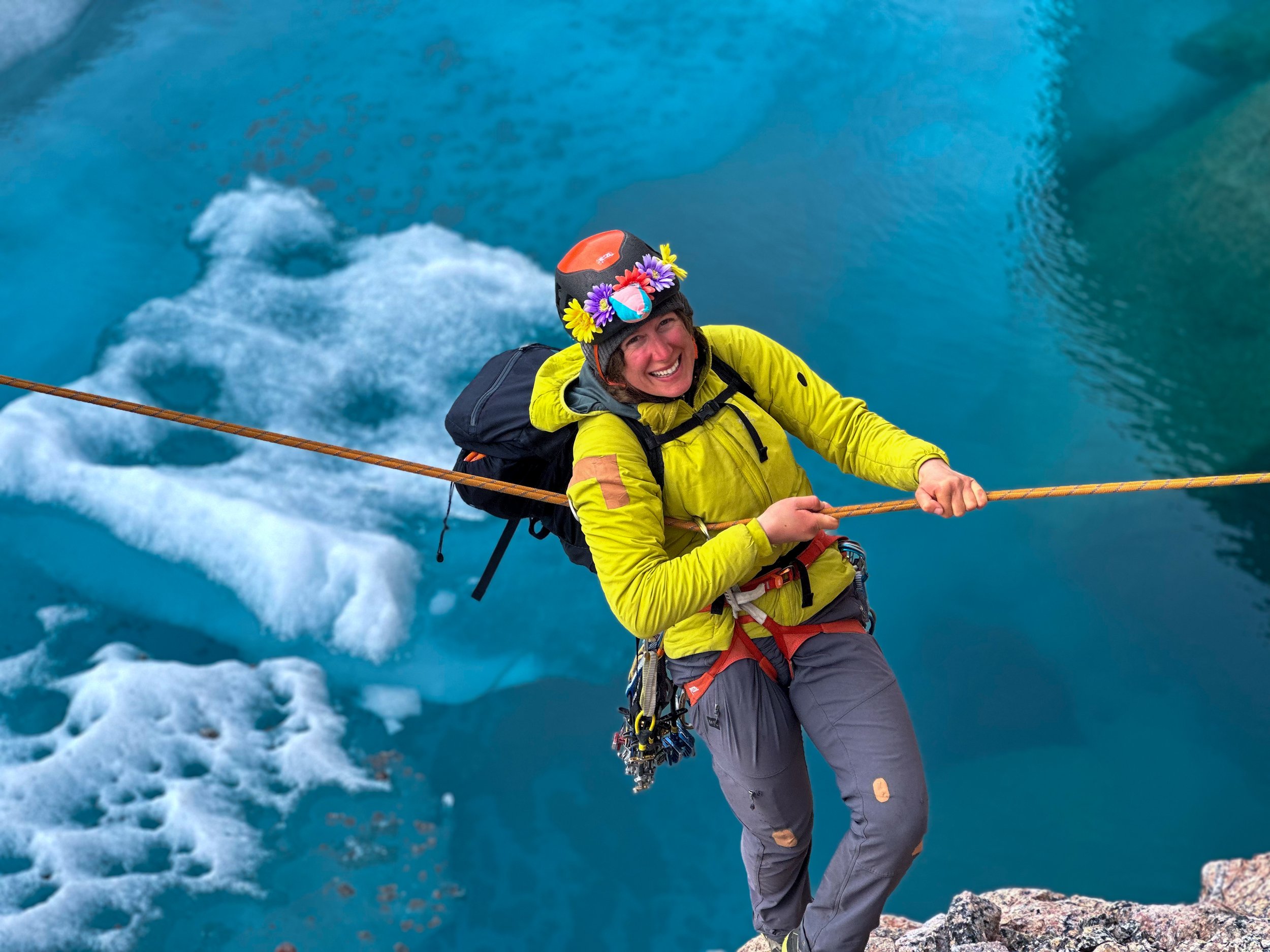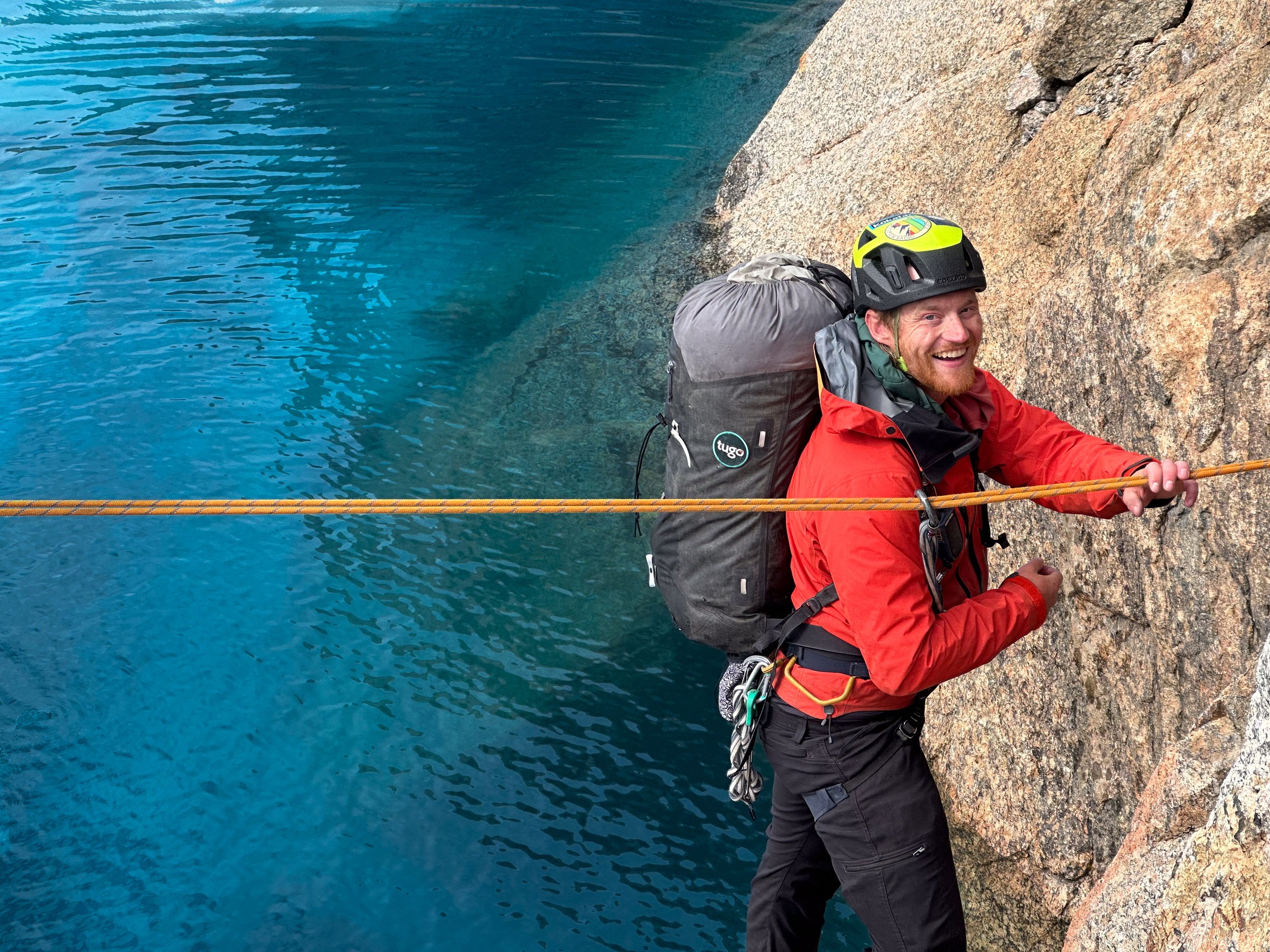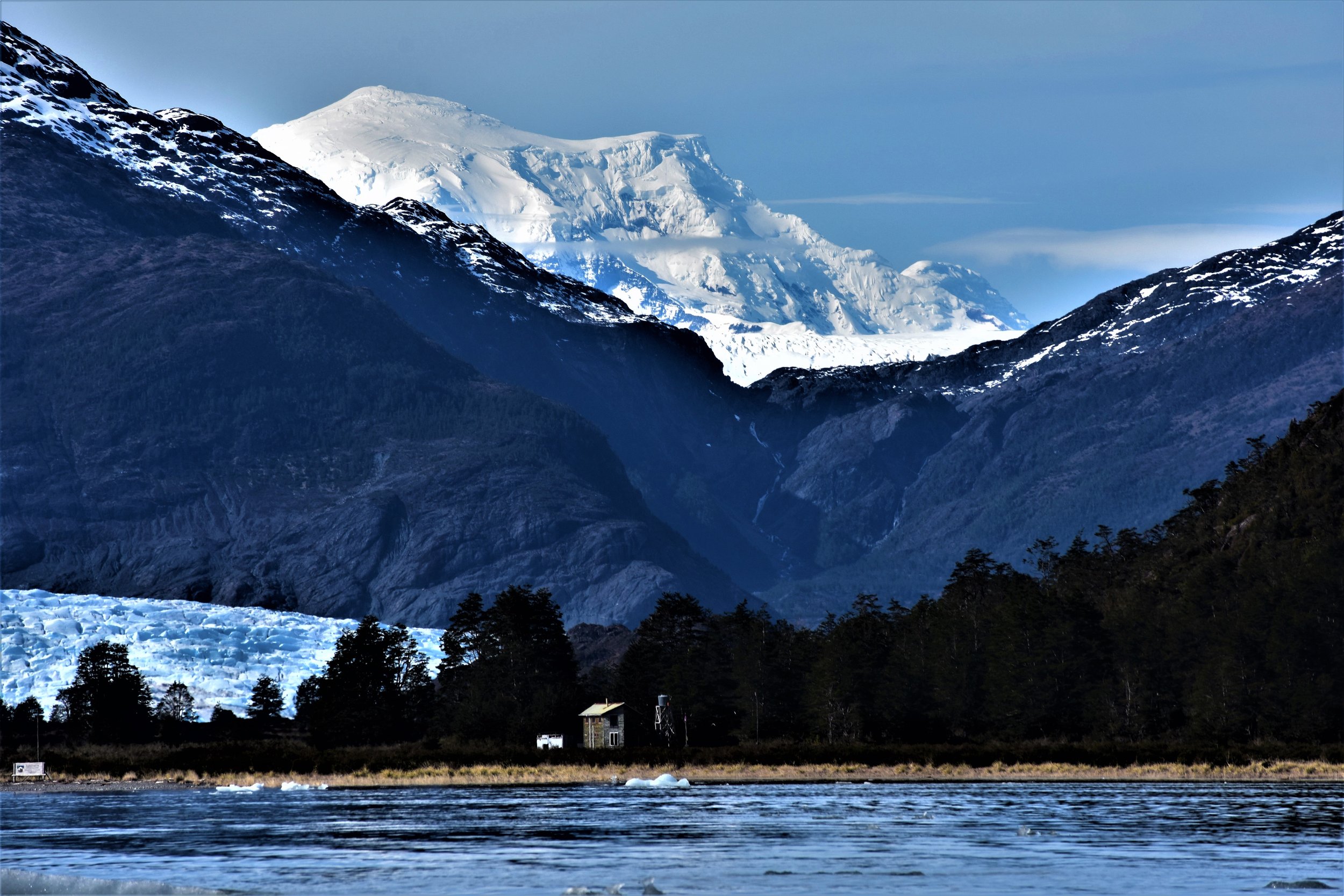Out for a glacier stroll the day before Alpamayo. PC: Nick Nasca
Adapted from the 2023 trip report by Nick Nasca
Mike in a meadow with the Husacaran Massif in the background on our first day in the range. PC: Nick Nasca
In the Summer of 2023, I went to the Cordillera Blanca with my friend and climbing Partner Mike Buyaskas. We were supported by the AAC's Live Your Dream Grant and the Loa Fund. We intended to complete an ultra mountaineering link-up. I spent countless hours researching the terrain via satellite imagery and corresponding internet photos, messaging with Peruvian guides via social media, and reading obscure trip reports I'd found from buried corners of the internet. We planned to pre-stock four camps and make a three-week push, summiting eight mountains along the way. In addition to the mental and logistical prep, Mike and I followed a training program for the six months before our expedition.
On June 18, we landed in Lima with a ridiculous amount of luggage. One bus ride later, we were in Huaraz packing the bags that would be used for our restocked camps. We hung out around the Andean Kingdom and the Casa de Guias to learn about recent mountain conditions. We soon met Manuel Bernuy Ponte, a young Peruvian guide and owner of Peruvian Climbs. He was our most helpful connection in Huaraz. Manuel made himself and his experience in the range incredibly accessible, giving us an accurate picture of what to expect in the stretches where our route departed from the usual trodden paths of the Blanca. He also helped us secure a driver, safely stash our gear in multiple locations, and find fair prices on bulk supplies we needed.
Chopicalqui
We prepared nonstop for two days, then launched into the range with a plan of acclimatizing and stashing resupplies. We were scouting terrain between Huascaran and Chopicalqui five days later when we decided to adjust plans. A snow bridge had collapsed on Huascaran, killing a guide in the process. The prospect of equipping a ladder crossing was on the table, but there was no telling if or when that would occur. Furthermore, our on-the-ground appraisal found that linking Huascaran and Chopicalqui would require traversing extremely dangerous and highly technical terrain. The conditions that would have allowed for a more reasonable attempt simply no longer exist due to the rapid melt-out in this range. Here, we conceded our first route change, deciding to drop the first leg of our ultraneering challenge and to ration our food to stay longer and make an attempt on Chopicalqui's summit while we were at the moraine camp.
Nick posing for a sunset picture at Chopicalqui base camp. PC: Mike Buyaskas
Knowing how slowly we moved in our barely acclimatized state, we started from moraine camp at 10 p.m. We plugged along the most extensive glacier we had ever walked on all night until we found ourselves 400 feet short of the summit by sunrise. We had fought the effects of altitude for the entire push when they finally caught up to us in the form of a costly miscommunication, which ended in our rappelling. We broke down our camp that afternoon and hitchhiked back to town by night.
Quitaraju and Alpamayo
Nick revelling in the sunset and stoke underneath Alpamayos West face. PC: Mike Buyaskas
After a day and a half of rest, we packed enough supplies for a week, intending to climb Quitaraju and Alpamayo. The climb from Moraine camp to the Alpamayo Quitaraju col was strenuous. We climbed two pitches of low-grade alpine ice with heavy packs, which made for a more challenging day than expected. Before we could drop our packs at Col camp that afternoon, a giant ice mushroom cleaved, sending an avalanche careening directly down the runnel that contained our intended climb. These factors combined to make Alpamayo loom in my heart the same way its western face would loom over our tent for the next few days. Unfortunately, the next morning, Mike woke up altitude sick, and we decided to rest instead of attempting Quitaraju. The day after, we climbed Alpamayo. The climbing in the upper runnel was fantastic, and it felt like the whole world rotated on the axis of single moments between swings and kicks. I topped out on the summit ridge, and due to time constraints, we rappelled from there, despite the ridgeline traverse posing no more difficult climbing.
Rest days
The next day, we got into town, and the day after that, we went for a trail run to celebrate Mike's birthday and take a break from the expedition. We reveled in our further acclimatization and returned to the base of Huandoy and the Pisco refugio, where friends were looking after the bag filled with our first stocked camp. Our ultraneering traverse received the final nail in the coffin when we observed our route up Huandoy's East Face nearly melted out, exposing bands of heinous chossy mixed climbing that otherwise would have been ice and snow. Our route would be too dry when we were poised for a summit attempt. We had yet to make a true summit but now believed ourselves to be acclimatized, so we set our sights on doing Tocllarajus W Face Direct (D+) in a faster and lighter style.
Tocllarajus
Nick roping up for the hike back from Tocullaraju high camp, The line Nick and Mike attempted on Tocullaraju's W face climbs the icey path directly through the rocky pinch high on the climber's right side of the face.
We approached the base camp in one speedy push the night we returned from our trail run. The next day, we reached glacier camp directly underneath the face. We watched our route for a day and planned a detour from the original line to thread a safer needle between seracs high on the face. We heard the route had just yielded its first successful summit days before, after turning around many this season. We started at midnight this time, and after delicately climbing the giant icey flower petals of the upper bergschrund, we suffered excruciatingly cold and exposed belays up the sheer ice face. About two pitches from the summit ridgeline, as the sun rose, Mike began to feel too altitude sick to continue. Using zero threads, we were able to bail down the face relatively quickly.
Expedition Changes
Mike had to leave Peru early due to a personal situation developing at home, which greatly limited our options for the remainder of the trip. We now had ten more days, and due to Mike's altitude issues, we eventually settled on a smaller, more technical route. We decided to try what we thought may be an unclimbed line on the south face of Vallunaraju's south summit. It involved 300 feet of 70-80 degree mixed climbing, which gave way to 3-400 more feet of easier mixed terrain.
Vallunaraju
Nick finding the start of the potential new line we attempted to climb on Vallanaraju Sur. PC: Mike Buyasakas
We attempted the peak in true alpine style, starting from the gate for the national park at the mouth of the approach canyon and going gate to gate. I led an awesome M4- pitch at the start of the technicalities on beautifully striated granite. Still, we again bailed due to dangerous deep-faceted snow lurking underneath trapdoors of semi-firm crust on the upper face. Over the summer, we found that the south-facing slopes were the most likely to have that terrifying, completely unstable Peruvian snow.
Huamashraju
We had time for one more climb before Mike's departure, and we chose to switch things up and try the classic Sins-Hanning route on Huamashraju. It is a five-pitch 5.9 on a splitter granite wall that finishes up a moderate snow ridge to the summit. We approached in the evening and bivied in a boulder cave at the very base of the route. The rapidly melting glaciers in the Blanca have formed a small pool at the base of the wall, allowing us to advance past basecamp and skip out on melting snow. The following day, we led in blocks, with Mike tackling the delicate slabby corner crux of the lower wall while I got the pleasure of pulling a fantastic roof and bumping our only #4 up the back of the offwidth squeeze pitch. We started simuling when we got up high, and once atop the ridge, we found nothing but smooth low-angle granite for another three rope lengths. These 3 pitches are apparently a new development even compared to just two years ago when it was reported that snow was reached at the beginning of the ridge. We transitioned into our crampons and soloed to the summit. Unfortunately due to a crampon malfunction Mike decided to stay behind and set up our first rappel. The final snow ridge included a 100 foot long steep airy traverse across calf high penitiente. The Penitiente gave way to a final rope length of easy mixed climbing requiring a couple of easy blocky mantles on rock. At the top I admired Nevado Huantsan for a moment before turning around to start the descent: a snowy down-climb proceeded by 4 rope stretching double rope 70 meter rappels. One very long hike later, we were back at the trailhead around 11 p.m., where the onset of giardia rocked me the minute I sat down on the side of the road.
Leaving the Andes…
Our driver Freddy, a cousin of our host in Caraz. Freddy enjoys Mountain Biking through the canyons of the blanca, and his company was much appreciated during the few down days we had in Caraz. PC: A Passing Tourist
Mike left the next morning, and after five days of being sick in bed, I finally recovered. For my last adventure in the Andes, I took a long, all-day trail run up a lesser-known Quebrada. I had a hunch of where I might find water ice based on locations where I'd seen some ephemeral smears over the past two months. Right where I was expecting, I found an ice line that was even better than I could have imagined. This line of nearly 1000 ft of steep ice was the best-looking ice climb I'd seen in Peru. There is a small vanishing serac above it, and judging by pictures I found of the same face in 2013, the overhead danger will continue to decrease in the coming years. This experience had me leaving Peru with lots of stoke in my heart for the many lifetimes' worth of adventures to be had here on our planet. Overall, I learned a great deal on this trip. I now understand how to look at prominent, snowy peaks from a distance and estimate where the most sensible weakness may be and what the terrain will entail. I also got my first taste of leading out into entirely unknown terrain and am hooked.
On the upper slopes of Chopicalqui, shedding layers before continuing the descent. That evening we would make it back to the canyon floor and haggle/hitchhike our way back to Caraz. PC: Mike Buyaskas
In terms of our ultraneering challenge, the goal is still accomplishable. I don't know if I will ever attempt it again. It required massive amounts of logistical challenges as well as blue-collar prep work. I underestimated just how demanding the conditions might be between 8 different mountains. Although all of the routes we intended to climb would go at some point during the season we spent there, being able to climb all of them safely in the same three-week window would be a rare occurrence. If one were to fly off the summits of these peaks using a wing, the ultraneering traverse would become much more feasible and enjoyable. Hopefully, one day, I will get the time and resources to begin learning the art of flying, but I must return to the ordinary world via the booter. Thank you, American Alpine Club, for helping me have a once-in-a-lifetime summer in the Andes.
This could be YOU! Apply for the Live Your Dream grant before it closes, on April 30. Don’t wait, your dream expedition is just an application away!











